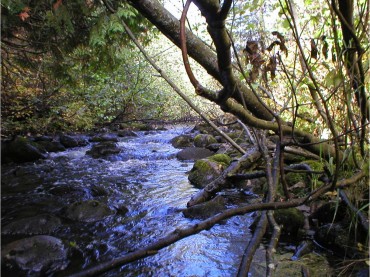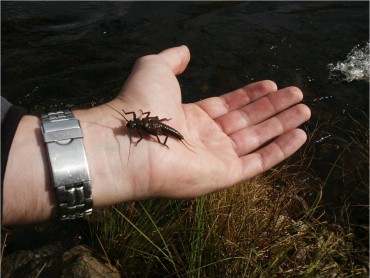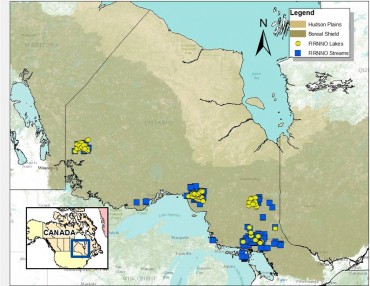The Freshwater Invertebrate Reference Network of Northern Ontario (FIRNNO)
Biological indicators are useful in gauging the degree of impact due to human activities. Benthic macroinvertebrates are the most often used biological monitors for determination of water quality. These bottom dwelling insects, crustaceans, worms, molluscs etc. are good indicators of aquatic ecosystem health because:
- They are ubiquitous (you can find some sort of invertebrate in any water body)
- They are responsive to changes in water and sediment quality
- They are easy to collect with a simple net
- They are sedentary (they don’t travel very far in their lifetime and so water quality results are local )
- The invertebrate groups have varying degrees of tolerance to human impacts; if a sample contains mainly midges, worms, and snails, the water quality in that sampling area is probably poor. If, on the other hand there are mostly stoneflies, caddisflies and mayflies, you can infer good water quality
As part of the Metal Mining Effluent Regulations (MMER) of the Fisheries Act, the metal mining industry is required to monitor their biological effects in the water receiving discharge. In fact, Environmental Effects Monitoring (EEM) includes a component meant to ensure healthy fish habitat including the benthic macroinvertebrate communities that are the base on many aquatic food chains. The benthic macroinvertebrate communities in receiving waters are to be compared to communities in minimally impacted reference sites. One method of making the comparison is using the Reference Condition Approach (RCA). RCA is based on the premise that when a site is to be assessed, its BMI community is compared to that of many minimally impacted reference sites with similar habitat characteristics. The implementation of the RCA design generally requires a large network of reference site encompassing many habitat types from which to match a site of interest. Such a network is currently maintained by the Cooperative Freshwater Ecology Unit (CFEU) in conjunction with Environment Canada.
The Freshwater Invertebrate Reference Network of Northern Ontario (FIRNNO) was designed to assist the metal mining industry in locating suitable reference sites to meet the Environmental Effects Monitoring (EEM) requirements of the Fisheries Act. The objectives of this project are
- to develop and maintain a large network of reference sites to define the normal range benthic macroinvertebrate (BMI) communities including chemical/physical habitat characteristics for Northern Ontario lakes and streams
- to assess and monitor mining and other human effects on surface waters by detecting any change in BMI community structure
Since FIRNNO’s establishment in 2003, BMI data for over 410 sites have been collected from the vicinity of 4 mining centers including Red Lake, Hemlo, Sudbury and Timmins along with accompanying water chemistry as well as site, channel and watershed level habitat data.
FIRNNO is a large network of reference sites that could be used to assess any number potential impacts. It has been used successfully by the mining industry in their reporting to Environment Canada but FIRNNO can readily be applied to other sectors including:
- Hydro electric
- Sewage
- Urbanization effects
- Road construction
- Climate Change


